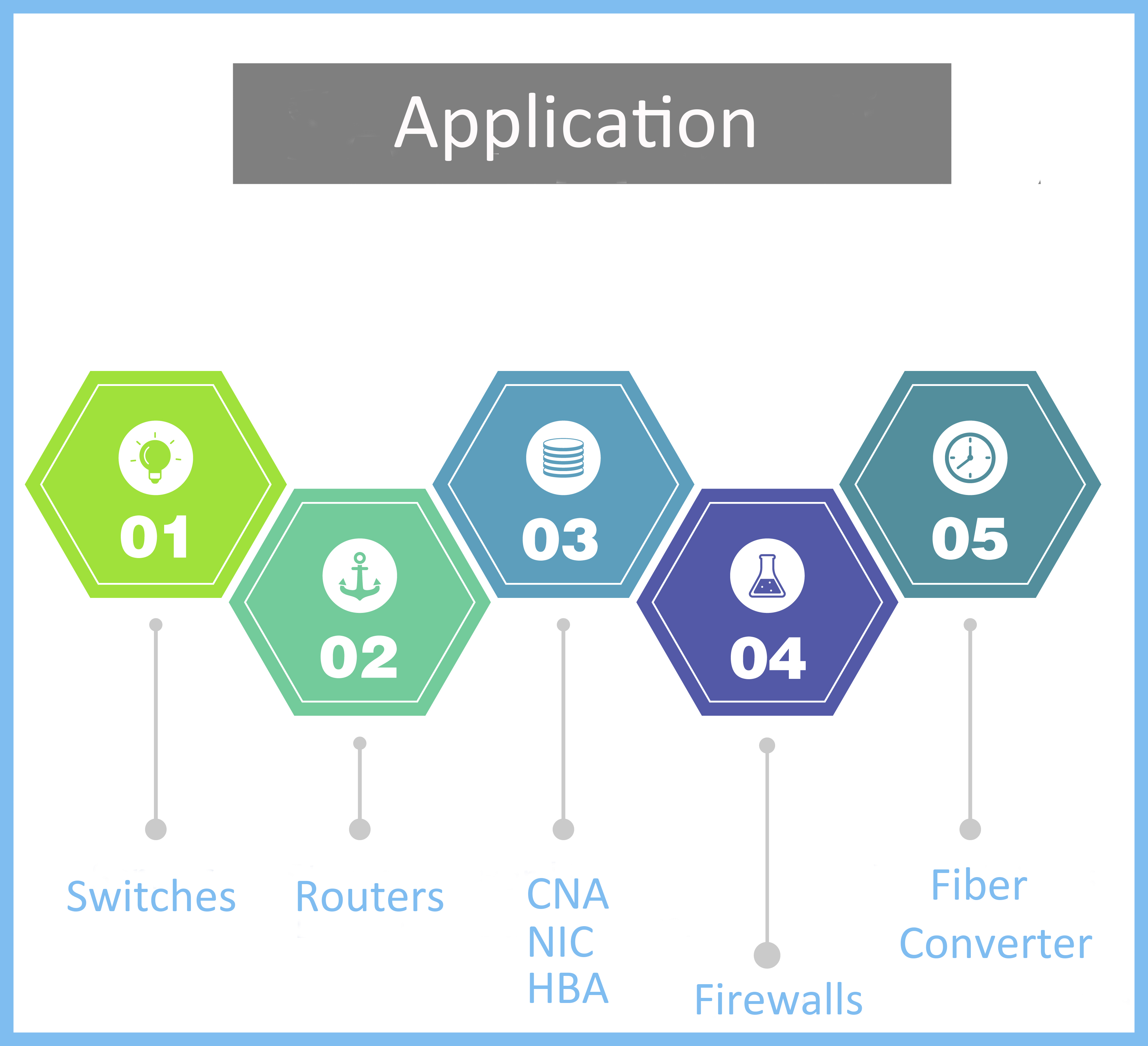The Simple Guide of Optical Transceiver
Definition
The word we now often refer to optical module is transceiver. It is a compound of transmitter and receiver, which is a smart combine. Because it vividly expresses the key function of the device, transmitting and receiving signal. Therefore, a transceiver is basically a transmitter and receiver in a small package and serves as an important sub system in fiber optic communication networks.
Structure and Operational Principle
There are several key components in a common transceiver. It’s TOSA, ROSA, laser driver chip, limiting amplifier chip and PCB. This components usually hides in a small package with one or two fiber optic connector at one hand including a release latch and an electrical PCB edge connector at the other. The TOSA(Transmitter Optical Sub-assembly) consists of a laser diode, optical interface, monitor photodiode, metal housing, and electrical interface. The ROSA (Receiver Optical Sub-assembly) consists of a photodiode, optical interface, metal housing, and electrical interface.
Look at how a common transceiver works. First, the electrical signal imported through PCB (Printed Circuit Board) from a motherboard is converted into the optical signal with the help of a laser diode and laser driver chip, and through TOSA the optical signal couples into an optical fiber cable. Meanwhile, the optical signal received through optical interface is converted by ROSA into the electrical signal, then exports by limiting amplifier to the motherboard over the PCB edge connector.

Short Story of Development
It probably not be over 30 years after the first transceiver was invented, but this tiny device has experienced updating every few years, which has taken many experts’ heart and soul. Generally speaking, the pace of technology progress always faster than we can imagine. But as for transceiver, no matter how far and how deep it will go and develop, the tendency of transceiver’s evolution always focus on data speed enhancing, miniaturization, longer distance, compaction, cost-effectiveness, lower dissipation and hot-plugging. In the following chart of different generation of transceivers, you may find how transceiver develop and update over the years.
| Transmission Speed | From Factor | Full Name | Year of latest re version | Application |
| 1G | GBIC | Gigabit Interface Converter | 2000 | Gigabit Ethernet,
Fiber Channel |
| SFP | Small Form-factor Pluggable
Or Mini-GBIC |
2001 | Gigabit Ethernet,
Fiber Channel |
|
| 10G | XENPAK | 10 Gigabit Ethernet Transceiver Package | 2001 | 10 Gigabit Ethernet,
Infiniband |
| X2 | 10 Gigabit Ethernet Transceiver Package 2nd Generation | 2005 | 10 Gigabit Ethernet OC-192/STM-64 speed SDH/SONET | |
| XFP | 10 Gigabit Small Form Factor Pluggable | 2005 | 10 Gigabit Ethernet, 10 Gbit/s Fibre Channel, OC-192/STM-64 speed SDH/SONET, 10 Gbit/s Optical Transport Network standard OTU-2, and parallel optics links | |
| SFP+ | Enhanced Small Form-factor Pluggable | 2013 | 8 Gbit/s Fibre Channel, 10 Gigabit Ethernet and Optical Transport Network standard OTU2. | |
| 40G/100G | CFP/CFP2/CFP4 | Centum Form-factor Pluggable
|
2009 | 40 Gigabit Ethernet
100 Gigabit Ethernet OTU3,OTU4 STM-256/OC-768 |
| QSFP+/QSFP28 | Quad(40-channel) Small Form-factor Pluggable enhanced
|
2013 | 40 Gigabit Ethernet
100 Gigabit Ethernet EDR InfiniBand 32G Fibre Channel |
|
| 100G | CXP | Centum form-factor pluggable 12x
|
In Progress | 100 Gigabit Ethernet
12x QDR InfiniBand |
| 200G | QSFP56 | Quad Small Form-factor Pluggable 56G
|
In Progress | 200 Gigabit Ethernet
HDR InfiniBand 64G Fibre Channel |
| 200G/400G | QSFP-DD | Quad Small Form Factor Pluggable Double Density | In Progress | 400 Gigabit Ethernet |

Varieties of Transceivers
Application
As an important sub system of communication network industry, transceivers can found where high speed computer network and high-bandwidth data communications need, such as base stations, servers, data centers and so on. Specifically, Ethernet switches, routers, firewalls and network interface cards, fiber converter are most application scenarios.

Standardization
No matter old GBIC or the latest QSFP-DD, they are ‘standardized’ by multi-source agreements(MSA). It is an agreement between multiple manufacturers to make products which are compatible across vendors. This is a very important agreement for many transceiver market participator. Besides strictly defining the operating characteristic of transceivers that compliant vendor can make produce, most importantly, it establishes a competitive market for interoperable products, allowing third party vendor participating in the market. Thus, transceivers may be purchased from any of the multiple sources in the open market, just like 10Gtek.
